Aqaba - 10th October 2011 - 11th October 2011
The ferry ride was pretty straightforward and we were treated to an exquisite sun set/moonrise over a dead calm sea. Arriving in Jordan felt like we had left Africa behind and the decidedly low tech immigration/customs process in Nuweiba was replaced by car scanning x-ray equipment and air-conditioned efficiency. Nevertheless it was dark by the time we left the port and we found a place to stay not far away.
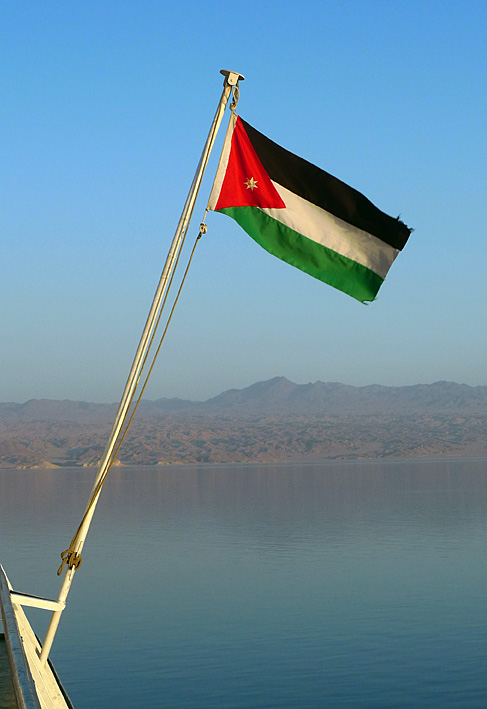 | 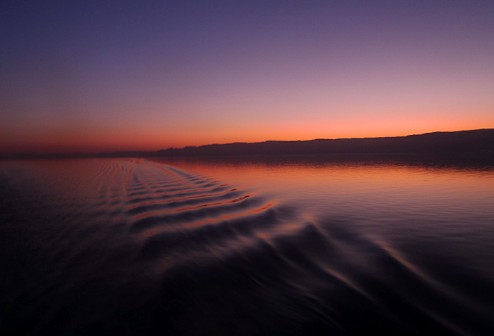 |
Wadi Rum - 12th October 2011 - 15th October 2011
It was a bit of a challenge finding our way around Wadi Rum, to start with at least. One craggy rock formation looks much like another and whilst we had certain waypoints on our GPS we kept getting within a few hundred metres only to find a large piece of inpenetrable sandstone in front of us.
But the great thing was there were so many special spots to camp and we were lucky enough to have a full moon for most of our stay which was beautiful. We spent a wonderful 4 days roaming the area and could have spent twice as long easily.
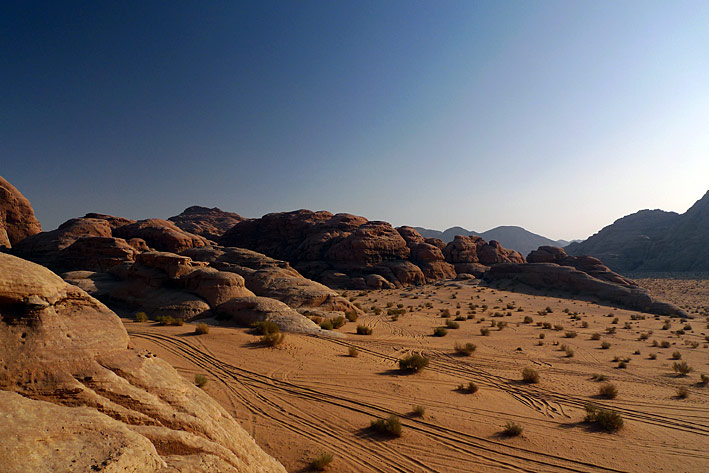 | 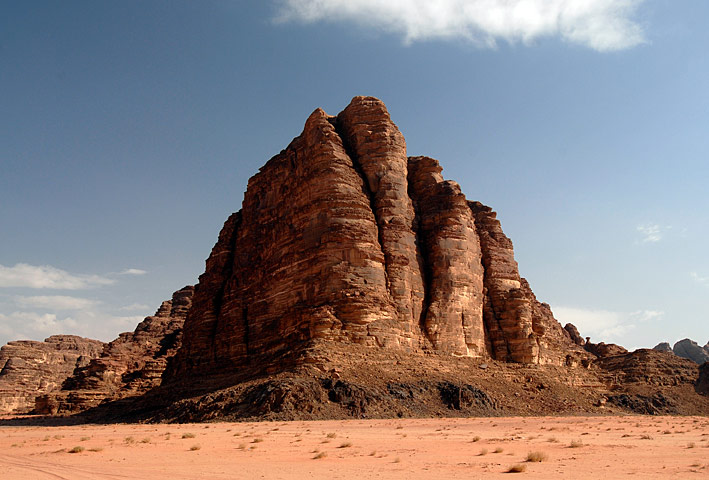 |
 |  |
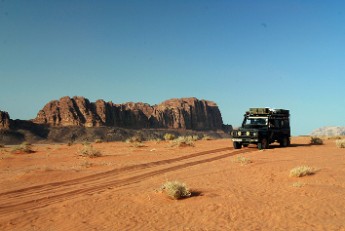 | 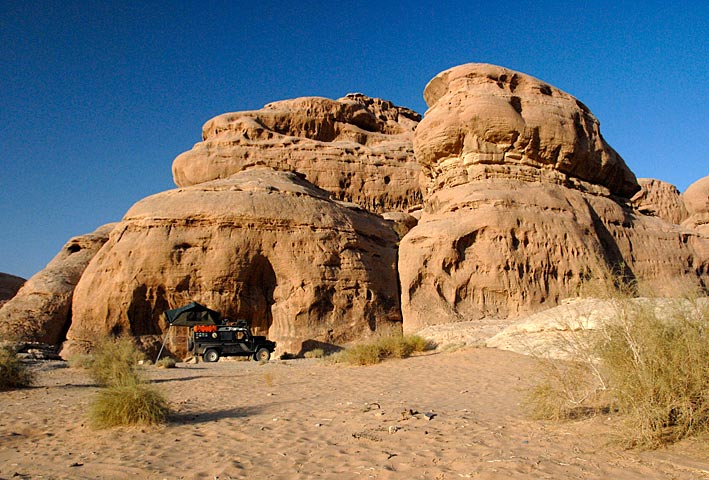 |
On our last day in Wadi Rum we'd heard (thank you Henk!) that there was camel racing in the nearby village of Diseh so we went along for a look. It was a great day out full of drama and chaos. The camels have electronic jockeys on their backs and the owners, and anyone else who can squeeze in, pack into pickups and career around the outside edge of the racetrack in clouds of dust to electronically "whip" their camels at the appropriate moment. Some of the camels didn't seem that keen on the idea of racing and each race start left a few determined to go the wrong way whilst the camel boys whooped, threw things and kicked the sand to try and persuade them to join the race. A few were so useless I fear they may be well on their way to being camel kebabs by now.
 | 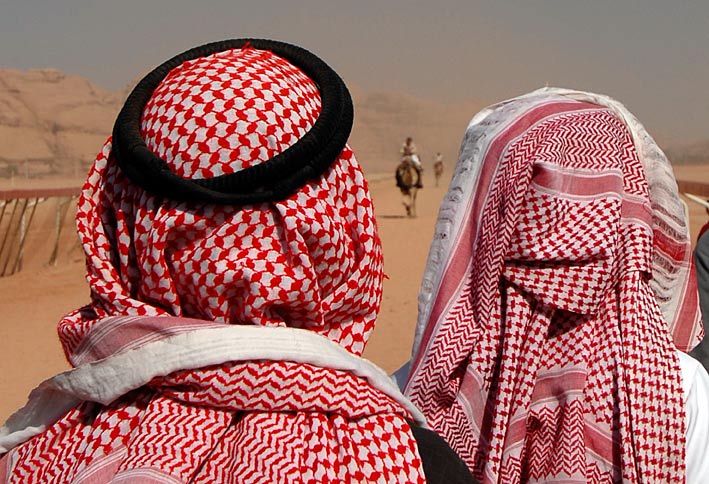 |
Petra - 16th October 2011 - 20th October 2011
We'd both always wanted to see the Rose City and it didn't disappoint in the least. What surprised us though was the sheer scale of the site. The most famous monuments such as the Treasury, the Royal Tombs and the Monastery are some distance apart and there are various tracks up to view points. On our first day we managed to walk over 30 km, much of which seemed to be up hill. We saw some truly breath-taking views though and the buildings themselves, carved out of the rock are awe-inspiring.
The sandstone itself is mesmerising, forming colourful swirls and eerie formations.
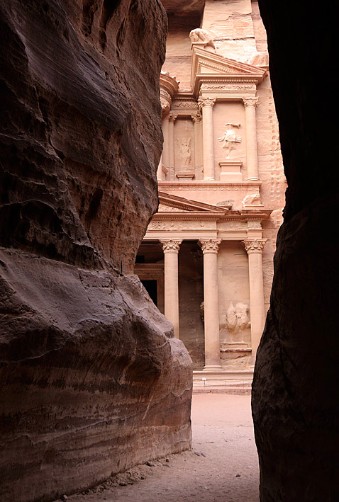 |  |
Highlights included:
- The first glimpse of the Treasury from the narrow Siq in the early morning light.
- Looking down on the Treasury from a precarious viewpoint in the rocks opposite
- Climbing (or rather finishing the climb) up to the Monastery and watching a couple of Bedouin lads scale the roof and leap across what looked like huge spaces to the gasps of the crowd below.
- The stunning views across to Wadi Araba from near the Monastery
- The walk up to the High Place of Sacrafice where the old stone altar (complete with drainage for the blood!) still sits and the walk down the valley of Wadi Farasa (Valley of Butterflys) past tombs and tricliniums which are buildings and niches carved into the rock where relatives used to hold feasts in honour of their dead).
- Exploring the Royal Tombs
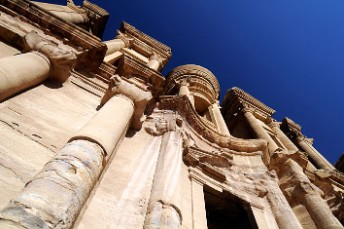 | 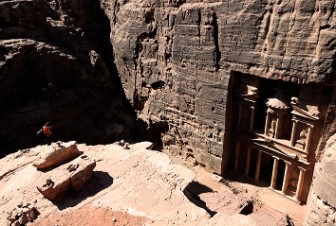 |
Some people had told us the
ambience of the Petra by Night tour was dented somewhat by the noisy throngs. However, we lurked in
the shadows until the masses had passed and got the candle-lit Siq all to
ourselves which was magical. Once down at the Treasury we caught the end
of the flute recital and Bedouin story-telling.
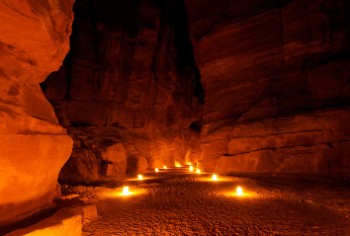 | 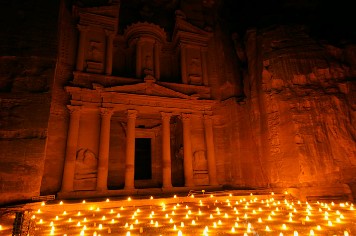 |
Dana and Wadi Mujib - 21st October 2011 - 23rd October 2011
Jordanian National Parks are a bit on the pricey side so instead of staying in the park accommodation at Dana we headed for a local place on the lip of the valley where Dana Village sits. The idea was that we could walk in the same area, with the same scenery for a fraction of the cost. In the end we were so exhausted from Petra that we just sat back and enjoyed the view for the day, sleeping at night in a camel hair tent. We were genuinely cold for the first time in months - quite a nice feeling!
The next day the plan was to follow the King's Highway up to Karak castle. However, we were tempted by the idea of a detour taking us down through the mountains to the Dead Sea and then back up through a different pass. In the end we missed our turning and found ourselves at the Dead Sea. So we decided we may as well have our planned dip there and then and got a great deal on a beach-side stone chalet with our own personal stretch of beach.
Being in the water was very odd. You bob around like a fishing float trying to keep upright and trying to swim with your legs out the water had us both laughing out loud. The water tasted vile and Jerry reported that getting it in your eyes wasn't much fun either. However, we were lucky that the sea was as calm as glass and we watched a very mellow sunset from our stoop at the water's edge.
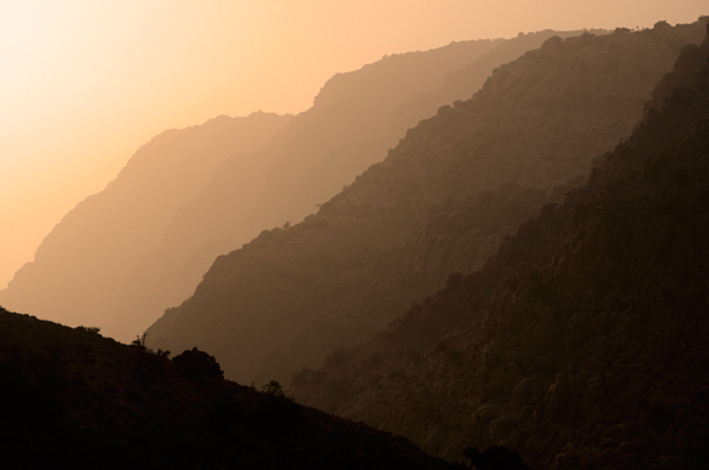 | 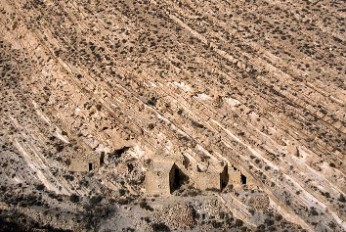 |
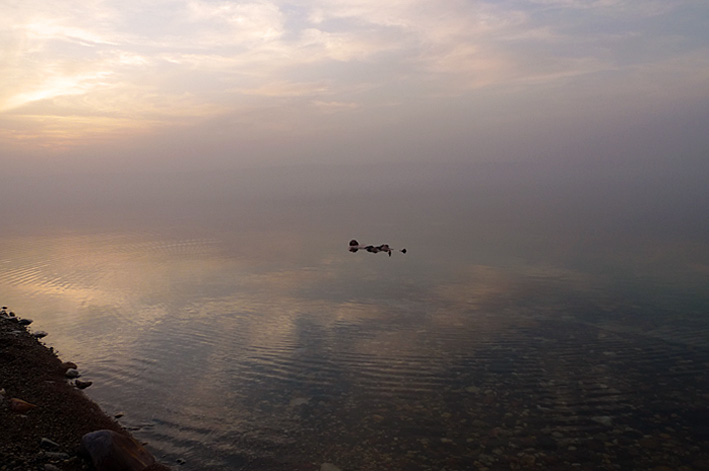 | 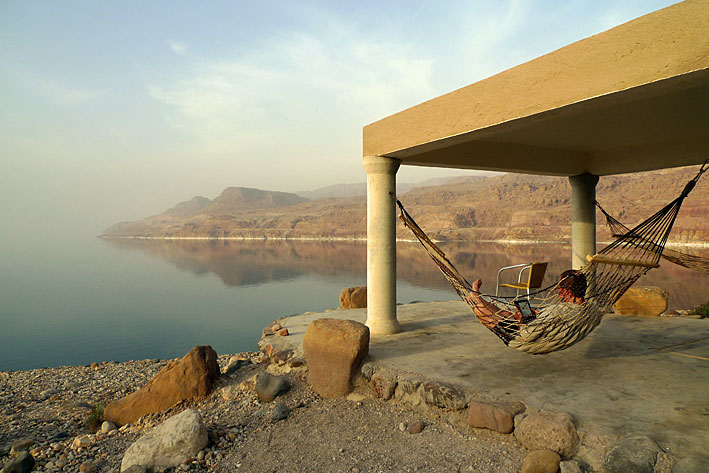 |
Amman - 24th October 2011 - 28th October 2011
We spent a very enjoyable few days enjoying the hospitality of an old friend and colleague, Mel, who now lives in Amman. She gave us the run of her beautiful house (and most importantly her washing machine!).
Jerash and Ajloun - 29th October 2011 - 31st October 2011
We headed north to Ajloun first. The castle was text-book castle material complete with turrets and moats. However, it is also small enough to get a clear impression of what it must have been like to live there - and the views from the rooftop were great.
From there we'd hoped to do a bit of walking at Ajloun Forest Reserve but that wasn't to be. Despite the fact that most of the walks are under 10km and sign-posted they are now guided only ... and there's a minimum party of 4 ... so we were looking at around $100 for a stroll in the woods. They are reportedly very nice woods - full of strawberry, carob and pistachio trees, but we didn't think it was worth it. We also went off to explore Dibeen Forest Reserve - which was quite scenic but very much "under construction" with lots of diggers and trucks and with huge amounts of rubbish. So we left under-impressed by the northern parks!
We stayed in Jerash ready for an assault on the Roman ruins the next morning.
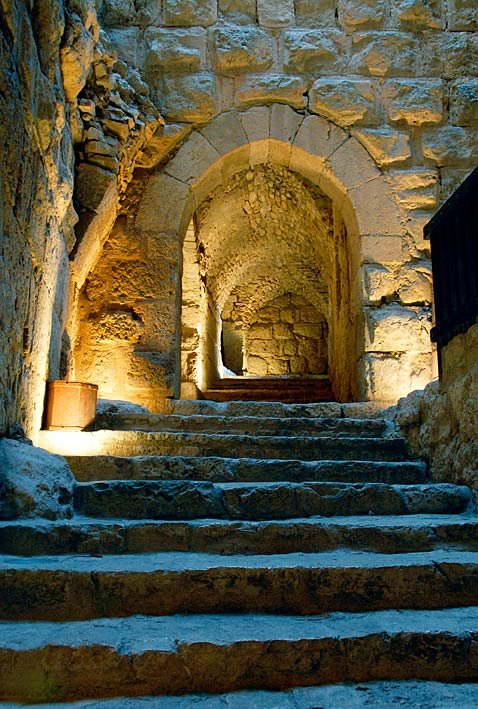 | 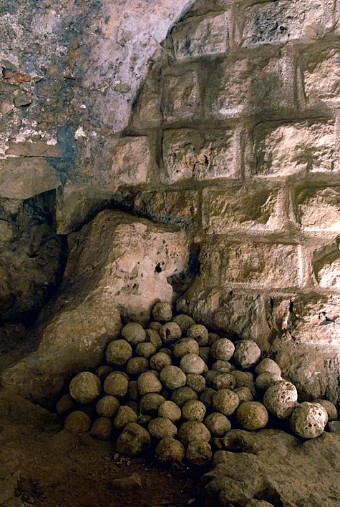 |
The ruins are amazing - still enough of the structures are left to get a real sense of what it must have been like in it's heyday. The forum (a huge oval area enclosed in columns), the southern theatre (still bearing the original seat numbers in places) and the Temple of Artemis high up on the hillside were all highlights. The Jordanian duo playing Scottish bagpipes in the theatre to demonstrate the acoustics were a little out of kilter but we did happen across a polystyrene boulder on the stage which led to some cheesy shots, a short strongman show for some of the passing tourists and us laughing ourselves into tears.
A lot of time effort and, I imagine, money has gone into restoring the hippodrome and they do a daily show to demonstrate Roman fighting techniques and chariot racing. We sat up in the stands with a load of school kids who did a very good impression of the Roman public baying for blood.
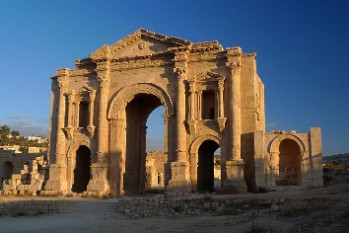 |  |
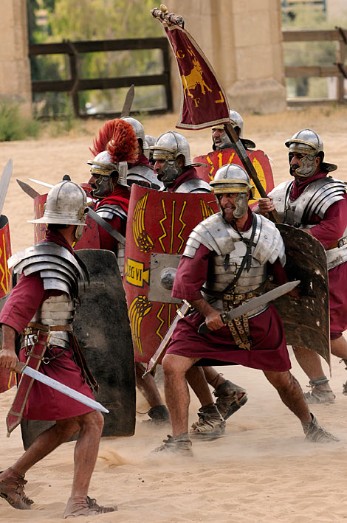 | 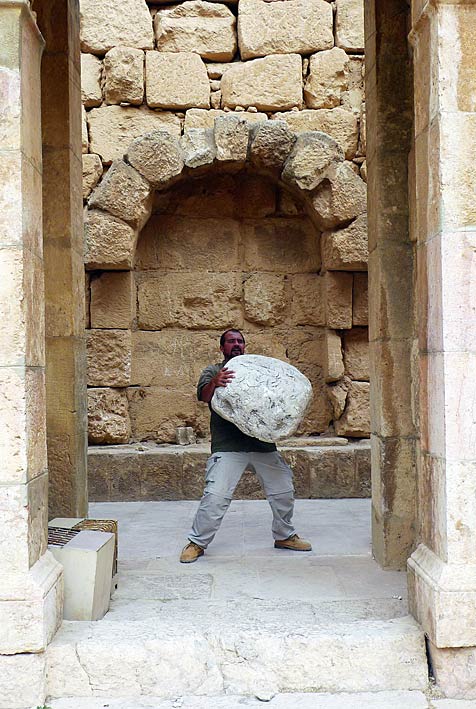 |
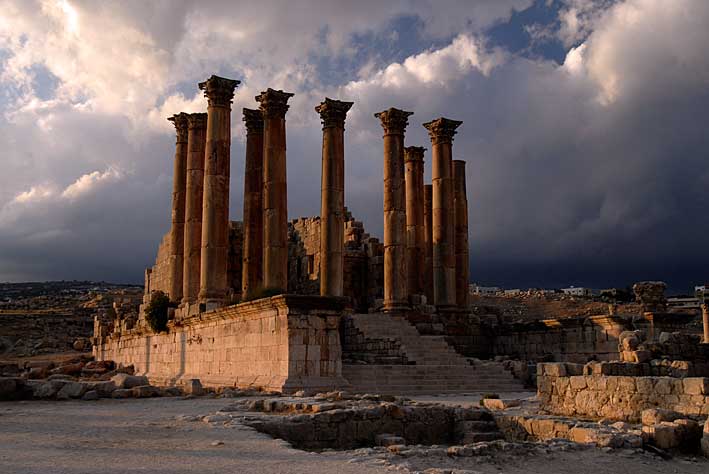 | 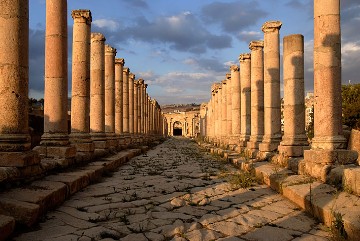 |
Azraq and the Eastern Desert Castles - 1st November 2011 - 2nd November 2011
We headed east into the inhospitable Badia Desert. This part of Jordan is scarcely inhabited and has some unsavoury neighbours. The border with Iraq was ahead whilst Syria bordered us to the north and Saudi Arabia to the south. The road was almost exclusively driven by huge trucks plying their trade across the borders.
Our first stop was at Umm al Jimmal an ancient ruined city built of the local black basalt.
We stopped for the night at Azraq Lodge, now run by the Royal Society for the Conservation of Nature, but originally a British military hospital, complete with an ancient Land Rover outside. There is now an airforce base there and we got use to the roar of the jets taking off day and night.
We visited the nearby Azraq Wetland Reserve. For centuries there has been a huge oasis here and it attracted vast numbers of migrating birds on their travels between Europe and Africa. However, in the 1970's so much water was pumped out to supply the rapidly increasing population in Amman that the water table dropped 12 metres and the wetlands dried up altogether. They are furiously pumping water back in now but as just as quickly illegal wells dug by local farmers are draining it out again.
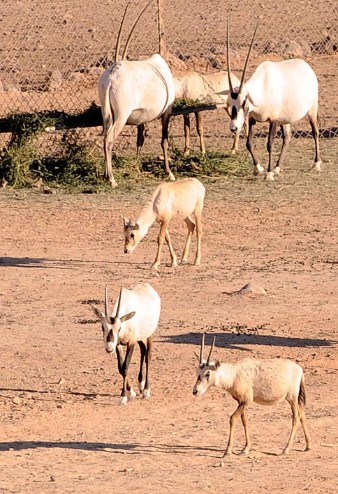 |  |
We were hoping to visit Shamauri Wildlife Reserve whilst we were here. It is only a tiny plot of land but runs several pretty successful captive breeding programs, the most famous of which is the Arabian Oryx. These are much like their southern cousins though almost entirely white and have been hunted to extinction in the wild. The Reserve has been shut for three years but we managed to wangle a visit on the basis that we had been working in conservation.
This whole area of the desert is peppered by desert castles. These had various original purposes from fortified defences to pure pleasure palaces.
First off we visited Azraq Castle which is famous for being Lawrence of Arabia's base at the time of the Arab Revolt. It's most impressive feature was some solid basalt doors that still work today though you need to put your shoulder into it to get them open.
Our next stop was Amra, which is really more of a bathhouse than a castle. It is decorated with some beautiful paintings, some of which are rather bizarre (a bear playing a banjo with a monkey clapping along!). Some feature some quite voluptuous naked ladies and as such have been the subject of controversy in the Muslim community. It is now a UNESCO site and is being restored - as it happened by a group of Italian experts staying at our Lodge. They were kind enough to give us an insight into the subject matter and the restoration process.
Our final castle was Kharana. An impressive edifice which despite it's impregnable appearance was actually just a meeting place for local dignitaries. There is still some graffiti on the wall that helped date the entire building - written in November 747AD.
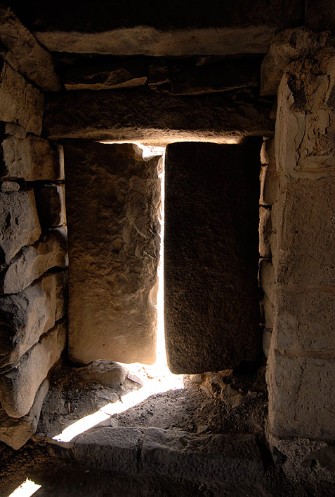 | 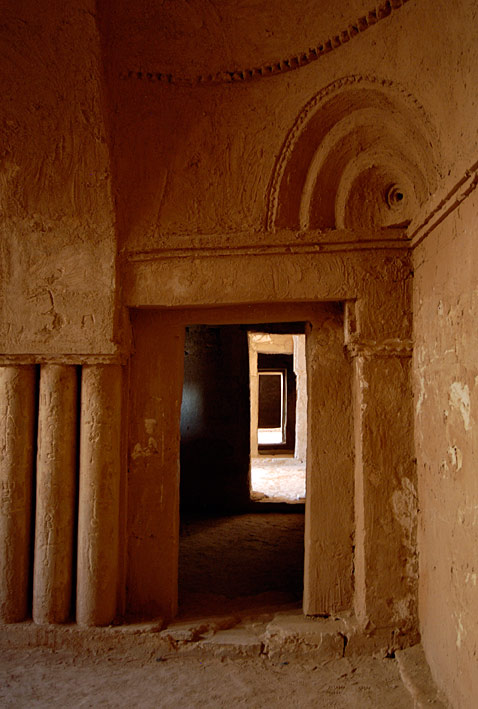 |
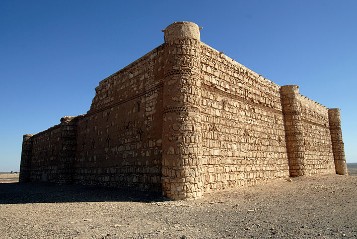 | 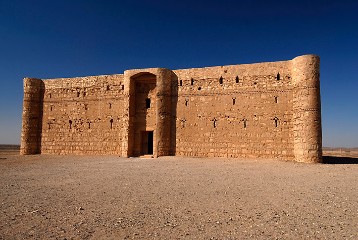 |
Amman to Madaba and Karak - 3rd November 2011 - 5th November 2011
Madaba is famous for it's ancient mosaics. It has been a settlement for millenia and even gets a mention in the bible but in the 8th century there was a catastrophic earthquake that leveled it. It lay in ruins for over a thousand years until it was resettled by refugees in the late 19th century. As they started to dig foundations for new houses they started to discover exquisite mosaics all over the town.
The most famous of these is the so-called Madaba Map which dates back to the 4th century. It is a 20 x 8 metre map of the area showing Jerusalem, the Dead Sea (complete with the fish swimming back upstream to escape the salt!), Bethlehem, Mount Sinai and the Nile Delta - all meticulously pictured and labelled. Apparently cartographically speaking it's pretty accurate. It's an incredible thing.
The next day we headed up to Mount Nebo to stand in Moses' shoes as he was shown the Promised Land and then headed on towards the famous Crusader castle of Karak. En route we plunged down into the great Wadi Mujib gorge with some amazing views. Though we saw it from the outside, the traffic in town defeated us and we left without finding somewhere to park so we could go inside.
 | 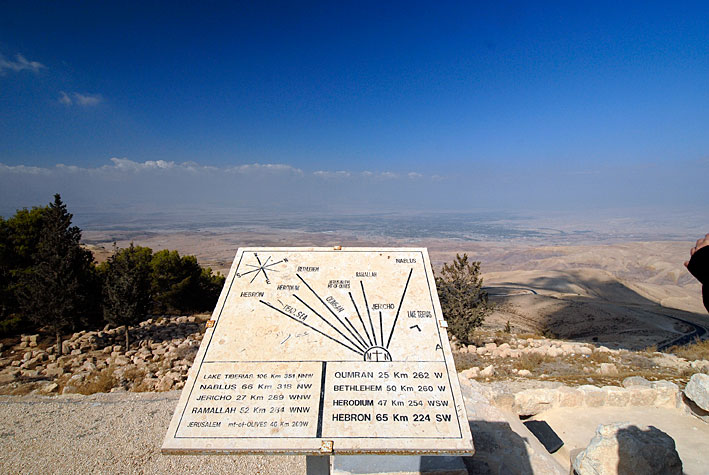 |